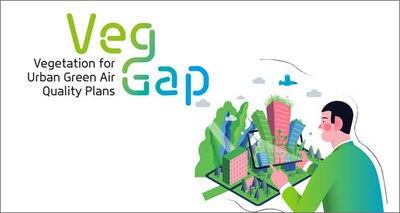Environment: Project to improve urban air quality with vegetation kicks off
13/5/2021
 Providing reliable data and information on the effects of vegetation on air quality and temperatures in cities. This is the goal of the European project VEG-GAP, coordinated by ENEA and funded with 1 million euro by the LIFE Program which, for the first time, will make guidelines and information platforms providing data on the effectiveness of urban vegetation in mitigating air pollution and temperature, available to public administrations.
Providing reliable data and information on the effects of vegetation on air quality and temperatures in cities. This is the goal of the European project VEG-GAP, coordinated by ENEA and funded with 1 million euro by the LIFE Program which, for the first time, will make guidelines and information platforms providing data on the effectiveness of urban vegetation in mitigating air pollution and temperature, available to public administrations.
The work will be implemented in Milan and Bologna in Italy and Madrid in Spain and its first actions based on an in-depth knowledge of the current state of greenery and air quality in the three urban areas, adopting an integrated approach which takes into account transport, the formation of pollutants in the atmosphere and the presence of buildings.
"Today, public administrations in Europe do not have datasets or decision tools on amount of vegetation, species to be used and their distribution in urban areas to improve air quality and mitigate the effects of climate change", Mihaela Mircea, ENEA researcher and project manager, explained.
The project also aims at investigating whether urban greenery, in certain weather conditions, can pose health risks, since vegetation has the ability to cool the air and filter pollutants, but it can also emit volatile organic compounds (BCOV), which contribute to the formation of pollutants like ozone (O3), and atmospheric particulate matter (PM10).
"The outcomes of the project will contribute to a better understanding of the possible effects of different environmental solutions like green infrastructures, urban agriculture, green belts and other nature-based solutions, promoting an integrated vision of changes in urban vegetation and, consequently, of the air in cities ”, Mircea concluded.
For more information please contact:
Mihaela Mircea, ENEA – Atmospheric Pollution Laboratory, mihaela.mircea@enea.it
Twitter: @VegGapBo
